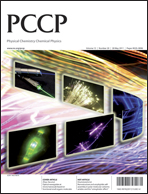Isotope exchange in low pressure cold plasmas of H2/D2 mixtures has been investigated by means of mass spectrometric measurements of neutrals and ions, and kinetic model calculations. The measurements, which include also electron temperatures and densities, were performed in a stainless steel hollow cathode reactor for three discharge pressures: 1, 2 and 8 Pa, and for mixture compositions ranging from 100% H2 to 100% D2. The data are analyzed in the light of the model calculations, which are in good global agreement with the experiments. Isotope selective effects are found both in the surface recombination and in the gas-phase ionic chemistry. The dissociation of the fuel gas molecules is followed by wall recycling, which regenerates H2 and D2 and produces HD. Atomic recombination at the wall is found to proceed through an Eley–Rideal mechanism, with a preference for reaction of the adsorbed atoms with gas phase D atoms. The best fit probabilities for Eley–Rideal abstraction with H and D are: γER H = 1.5 × 10−3, γER D = 2.0 × 10−3. Concerning ions, at 1 Pa the diatomic species H2+, D2+ and HD+, formed directly by electron impact, prevail in the distributions, and at 8 Pa, the triatomic ions H3+, H2D+, HD2+ and D3+, produced primarily in reactions of diatomic ions with molecules, dominate the plasma composition. In this higher pressure regime, the formation of the mixed ions H2D+ and HD2+ is favoured in comparison with that of H3+ and D3+, as expected on statistical grounds. The model results predict a very small preference, undetectable within the precision of the measurements, for the generation of triatomic ions with a higher degree of deuteration, which is probably a residual influence at room temperature of the marked zero point energy effects (ZPE), relevant for deuterium fractionation in interstellar space. In contrast, ZPE effects are found to be decisive for the observed distribution of monoatomic ions H+ and D+, even at room temperature. The final H+/D+ ratio is determined to a great extent by proton (and deuteron) exchange, which favours the enhancement of H+ and the concomitant decrease of D+.


 Please wait while we load your content...
Please wait while we load your content...